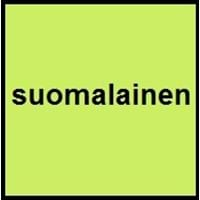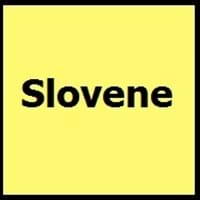Finnish vs Slovene
Countries
European Union, Finland
European Union, Slovenia
National Language
Estonia, Finland, Norway, Russia, Sweden
Austria, Croatia, Hungary, Italy, Slovenia
Second Language
Estonia
Not spoken in any of the countries
Speaking Continents
Asia, Europe
Europe
Minority Language
Republic of Karelia, Russian Federation, Sweden
Austria, Hungary, Italy
Regulated By
Institute for the Languages of Finland
Slovenian Academy of Sciences and Arts
Interesting Facts
- Finnish language has adopted many words from Iranian, Turkic, Baltic, Germanic and Slavic languages.
- In Finnish language, there are no articles or grammatical gender.
- The Freising Monuments is the oldest preserved records of written Slovene from 10th century.
- The first Slovene book was printed in 1550.
Similar To
Estonian and Livonian Languages
Serbo-Croatian
Derived From
Not Available
Not Available
Alphabets in
Finnish-Alphabets.jpg#200
Slovene-Alphabets.jpg#200
Writing Direction
Left-To-Right, Horizontal
Left-To-Right, Horizontal
How Are You?
Mitä kuuluu?
Kako se imate?
Good Night
hyvää yötä
Lahko noč
Good Evening
Hyvää iltaa
Dober večer
Good Afternoon
Hyvää iltapäivää
Dober dan
Good Morning
Hyvää huomenta
Dobro jutro
I Love You
Minä rakastan sinua
Ljubim te
Excuse Me
Anteeksi
Oprostite
Dialect 1
Colloquial Finnish
Prekmurje Slovene
Where They Speak
Finland
Hungary, Slovenia
How Many People Speak
Not Available
Where They Speak
Finland, Rauma
Italy
Dialect 3
Meänkieli
Styrian
Where They Speak
Finland, Sweden
Slovenia
How Many People Speak
Not Available
Speaking Population
Not Available
Not Available
Second Language Speakers
Not Available
Native Name
suomi / suomen kieli
Not available
Alternative Names
Suomi
Slovenian, Slovenscina
French Name
finnois
slovène
German Name
Finnisch
Slowenisch
Pronunciation
[ˈsuomi]
[slɔˈʋèːnski ˈjɛ̀ːzik], [slɔˈʋèːnʃt͡ʃina]
Ethnicity
ethnic Finns
Slovenes
Language Family
Uralic Family
Indo-European Family
Subgroup
Finno-Ugric
Not Available
Branch
Finnic
Not Available
Early Forms
Proto-Finnic language
No early forms
Standard Forms
standard Finnish
Slovene
Signed Forms
Signed Finnish
Not Available
Scope
Individual
Individual
ISO 639 6
Not Available
Not Available
Glottocode
finn1318
slov1268
Linguasphere
No data available
53-AAA-f
Language Type
Living
Living
Language Linguistic Typology
Subject-Verb-Object
Not Available
Language Morphological Typology
Agglutinative, Synthetic
Fusional
Finnish and Slovene Language History
Comparison of Finnish vs Slovene language history gives us differences between origin of Finnish and Slovene language. History of Finnish language states that this language originated in 1543 whereas history of Slovene language states that this language originated in 972-1093. Family of the language also forms a part of history of that language. More on language families of these languages can be found out on Finnish and Slovene Language History.
Finnish and Slovene Greetings
People around the world use different languages to interact with each other. Even if we cannot communicate fluently in any language, it will always be beneficial to know about some of the common greetings or phrases from that language. This is where Finnish and Slovene greetings helps you to understand basic phrases in Finnish and Slovene language. Finnish word for "Hello" is Moi or Slovene word for "Thank You" is Hvala. Find more of such common Finnish Greetings and Slovene Greetings. These greetings will help you to be more confident when conversing with natives that speak these languages.
Finnish vs Slovene Difficulty
The Finnish vs Slovene difficulty level basically depends on the number of Finnish Alphabets and Slovene Alphabets. Also the number of vowels and consonants in the language plays an important role in deciding the difficulty level of that language. The important points to be considered when we compare Finnish and Slovene are the origin, speaking countries, language family, different greetings, speaking population of these languages. Want to know in Finnish and Slovene, which language is harder to learn? Time required to learn Finnish is 44 weeks while to learn Slovene time required is 44 weeks.





